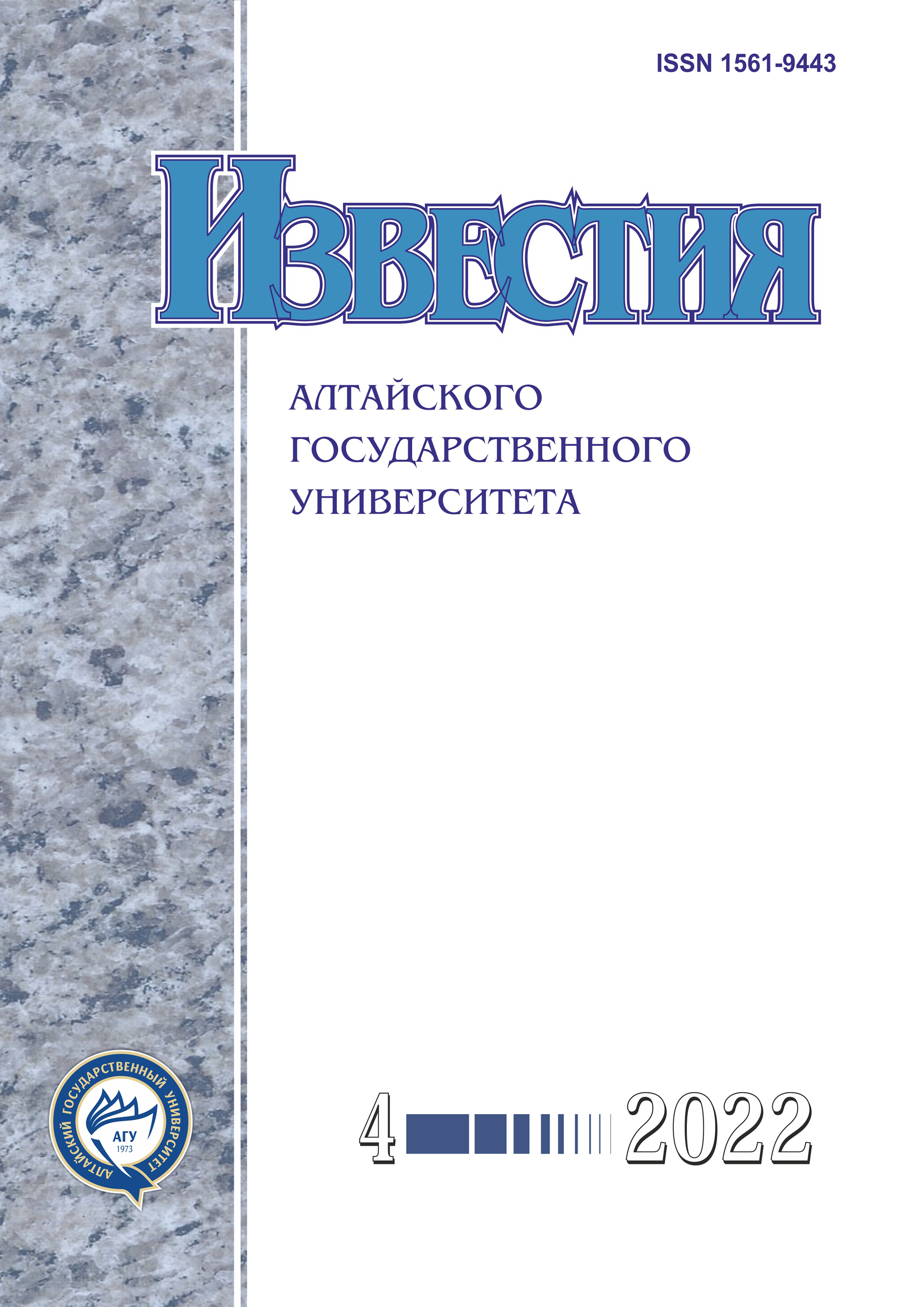Компьютерное моделирование переноса электрона между цитохромовым активным центром и активными формами кислорода и азота
УДК 539.12:004.94
Аннотация
Проведено компьютерное моделирование на уровне теории функционала плотности с применением функционала PBE и базисов группы def2-. Рассчитаны характеристики реакции переноса электрона по теории Маркуса с биорадикалов O2-, NO и NO- на активный центр цитохрома с. Получены значения энергии активации ΔG≠, матричного элемента перекрывания донорной и акцепторной молекулярных орбиталей HDA, частотный фактор переноса ket и константа скорости переноса второго порядка k. Численные значения k для трех радикалов позволяют сделать заключение об эффективности их нейтрализации путем взаимодействия с активным центром фермента. Для супероксид-иона O2- k=6,32·105 на расстоянии 5,02 Å, для монооксида азота NO k=6,96·106 на расстоянии 5,60 Å и оксоазанид-иона NO- k=4,45· 101 на расстояниях 5,60 Å и 4,45 Å. Расстояния переноса получены из кривых потенциальной энергии при сближении радикала с ионом железа. Полученные значения позволяют сделать вывод о том, что наиболее эффективно ион железа в гемовом белковом окружении способен дезактивировать супероксид-ион и монооксид азота.
Скачивания
Metrics
Литература
Barja G. Mitochondrial oxygen radical generation and leak: sites of production in states 4 and 3, organ specificity, and relation to aging and longevity // J. Bioenergetics and Biomembranes. 1999. Vol. 31.
Осипов А.Н., Борисенко Г.Г. Биологическая роль нитрозильных комплексов гемопротеинов // Успехи биологической химии. 2007. Т. 47.
Neese F. The ORCA program system // Wiley interdisciplinary Reviews — Computational Molecular Science. 2012. Vol. 2 (1).
Perdew J.P, Burke K., Ernzerhof M. Generalized Gradient Approximation Made Simple // Phys. Rev. Letters. 1996. Vol. 77.
Weigend F., Ahlrichs R. Balanced Basis Sets of Split Valence, Triple Zeta Valence and Quadruple Zeta Valence Quality for H to Rn: Design and Assessment of Accuracy // Phys. Chem. Chem. Phys. 2005. Vol. 7.
Rappoport D., Furche F. Property-optimized Gaussian basis sets for molecular response calculations // Phys. Chem. Chem. Phys. 2010. Vol. 133.
Xerri B., Petitjean H., Dupeyrat F., Flament J.-P, Lorphelin A., Vidaud C., Berthomieu C., Berthomieu D. Mid-and Far-Infrared Marker Bands of the Metal Coordination Sites of the Histidine Side Chains in the Protein Cu,Zn-Superoxide Dismutase// European Journal of Inorganic Chemistry. 2014. Vol. 27.
Weigend F. Accurate Coulomb-fitting basis sets for H to Rn // Phys. Chem. Chem. Phys. 2006. Vol. 8.
Grimme S., Antony J., Ehrlich S. & Krieg H. A consistent and accurate ab initio parametrization of density functional dispersion correction (DFT-D) for the 94 elements H-Pu. J. Chem. Phys. 2010. Vol. 132.
Caldeweyher E., Bannwarth C., Grimme S. Extension of the D3 dispersion coefficient model // Phys. Chem. Chem. Phys. 2017. Vol. 147.
Cossi M., Rega N. & Scalmani G. et al. Energies, structures and electronic properties of molecules in solution with the CPCM solvation model. Chem. Phys. 2003. Vol. 24.
Marcus R.A., Sutin N. Electron transfers in chemistry and biology. 1985. Vol. 811 (3).
Eberson L. The Marcus theory of electron transfer, a sorting device for toxic compounds // Free radical biology and medicine. 1985. Vol. 1.
Cave R.J., Newton M.D. Calculation of electronic coupling matrix elements for ground and excited state electron transfer reactions: Comparison of the generalized Mulliken-Hush and block diagonalization methods // The Journal of Chemical Physics. 1997. Vol. 22.
Lippard S.J. Theory of Electron Transfer Reactions: Insights and Hindsights // Progress in Inorganic Chemistry 1983. Vol. 30.
Copyright (c) 2022 Екатерина Александровна Попова , Андрей Валерьевич Рябых , Ольга Андреевна Маслова , Сергей Александрович Безносюк

Это произведение доступно по лицензии Creative Commons «Attribution» («Атрибуция») 4.0 Всемирная.








